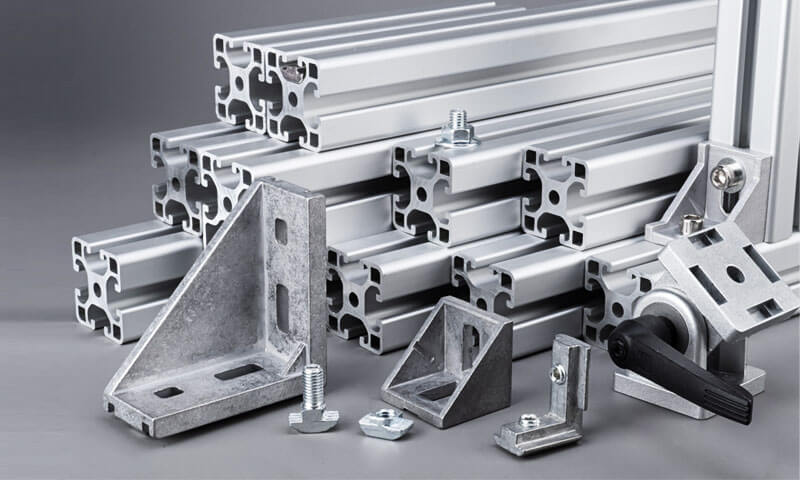In contemporary architecture, few materials offer the blend of strength, flexibility, and visual appeal that aluminium extrusions do. Lightweight yet durable, aluminium extrusions are redefining the possibilities for modern building facades—pushing aesthetic boundaries while delivering practical performance benefits. From intricate shading systems to dynamic cladding designs, their use is as much about design innovation as it is about functionality.
Below, we explore the best and most impactful ways aluminium extrusions are being used to create stunning facades that stand out in today’s environment.
Architectural Cladding Systems
One of the most common and effective uses of aluminium extrusions is in architectural cladding. By extruding aluminium into custom profiles, architects can create seamless, geometric surfaces that enhance both aesthetics and performance. These extrusions allow for creative panel shapes, deep reveals, or 3D forms that catch light in dynamic ways throughout the day.
Extruded cladding systems are not only visually impressive, but they also deliver durability and protection from environmental elements. When paired with powder coating or anodising, aluminium becomes corrosion-resistant, long-lasting, and virtually maintenance-free—making it an ideal material for external façades in all climates.
Sunshades and Brise Soleil
Extruded aluminium is perfect for custom sunshade systems and brise soleil designs that reduce solar heat gain while adding architectural interest. These systems typically consist of angled blades or louvres mounted on a façade, which can be oriented or spaced depending on the sun’s path and the building’s thermal requirements.
Using aluminium extrusions for shade means you can achieve precision-engineered blades with complex shapes or integrated drainage, while keeping weight to a minimum. These features are often a defining aesthetic element on commercial and civic buildings, turning practical shading into a bold design statement.
Decorative Screens and Façade Articulation
Façade screening is another area where aluminium extrusions shine. Architects are increasingly using custom aluminium screens to add depth, texture, and pattern to building façades. Whether it’s a repeating motif, a perforated skin, or a flowing organic form, extrusions allow for a high level of design control and refinement.
What sets extruded aluminium screens apart is their ability to combine visual drama with practical benefits, such as privacy, shading, and airflow. When illuminated at night, perforated or patterned screens can become striking features that contribute to the building’s identity and visual impact.
Frameless Glazing and Curtain Walls
Modern glass façades often rely on aluminium extrusions to create slim, strong framing systems that support expansive panels of glass while maintaining clean lines. In curtain wall applications, aluminium’s strength-to-weight ratio allows for taller spans and thinner profiles, enabling the all-glass look that is so popular in commercial and high-end residential design.
In addition to aesthetics, these extruded systems accommodate movement, water management, and thermal breaks—demonstrating how aluminium extrusions can meet high-performance demands without compromising on design intent.
Dynamic and Kinetic Facades
Some of the most innovative architectural façades today are kinetic—featuring moving elements that respond to environmental conditions or artistic vision. Aluminium extrusions are ideally suited to these applications due to their adaptability and ability to be engineered with high precision.
From rotating louvres to retractable panels and folding skins, extruded aluminium components enable movement while retaining strength and consistency. This opens the door to façade systems that are not just static surfaces but dynamic, interactive features that evolve throughout the day.
Integrated Lighting and Signage Channels
Extrusions can also be engineered to include channels for LED lighting, signage, or wiring, seamlessly integrating technology into the building envelope. For retail and hospitality buildings, this allows branding and illumination to become part of the architecture itself rather than add-ons.
By incorporating lighting into extruded façade systems, designers can create after-dark effects that transform a building’s appearance—adding visual interest, highlighting architectural forms, and improving safety and wayfinding.
In the hands of skilled designers, aluminium extrusions do more than meet structural requirements—they elevate façades into architectural features that combine purpose with personality. Whether used to add texture, manage light, or support expansive glazing, these custom profiles make it possible to deliver façades that are as efficient as they are eye-catching. For any project aiming to make a bold and lasting impression, aluminium extrusions offer the flexibility and performance to bring ambitious designs to life.




